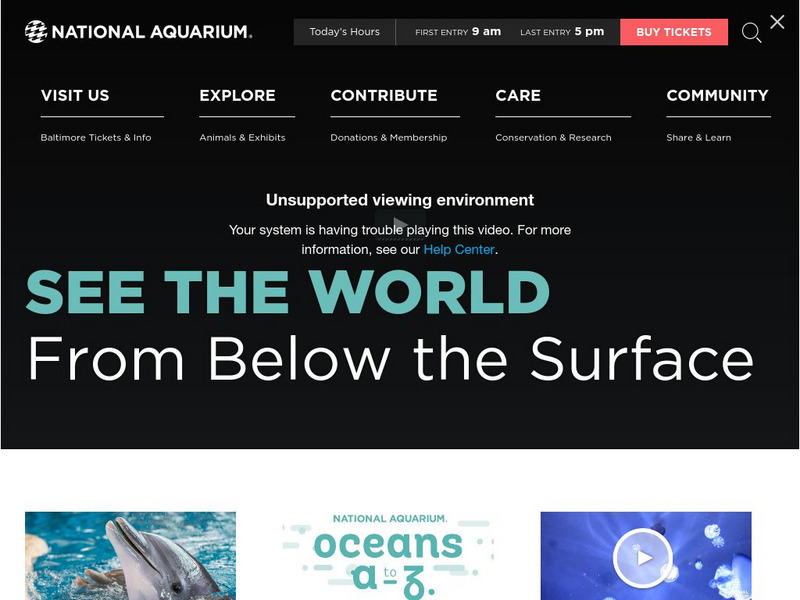Hi, what do you want to do?
Curated OER
Waves Lesson Plan
Students demonstrate an understanding of tsunamis and possible causes. In this investigative lesson students view a video and explore earthquakes and movement of tectonic plates.
Curated OER
HOW MUCH IS TOO MUCH?
Young scholars observe the construction and workings of an aquifer. They record and react to the effects of pollution on the aquifer.
Curated OER
Decimal Word Problems (mixed operations)
In this decimals worksheet, students solve word problems involving numbers with decimals and mixed operations. Students complete 6 problems total.
Curated OER
Global Water Cycle & Heat Flow
Students experiment to discover how different variables affect the water cycle. They do hat flow experiments and construct a computer heat flow model.
Curated OER
"Home Sweet Home?"
Students research an endangered animal's habitat, investigate the survival problems. They research the animal's zoo life. They research some programs of reintroduction and chart the pros and cons of each.
Curated OER
Introduction to Dissolved Oxygen and Demonstration of a Simple Test Procedure
Students explain the importance of dissolved oxygen in water ecosystems. They describe the aquatic oxygen cycle and the effect of water pollution on oxygen. They make observations, collect data and draw a conclusion.
Curated OER
What Trout Need
Students investigate the important components for a healthy trout habitat. In this fish habitat lesson, students discuss how the aquarium will simulate a trout's environment in nature. Students complete a trout information sheet to set...
Curated OER
Fish Tunes
Students use their musical talent to create a song for the class fishtank. In a group, they compose two or three songs about their own tropical fish in which they can use any rhythm and musical instruments they choose. They perform...
Curated OER
Your Blooming Pond
Students model a pond system that becomes enriched with nutrients (fertilizer). They manipulate variables, make observations over time, and draw conclusions that may lead to further inquiry. They, in groups, simulate a pond environment.
Curated OER
Density of a Gas
Eighth graders investigate the mass, volume, and density of a gas by producing it in a chemical reaction. The entire Density of a Gas Lab and L section of the K W L chart be formatively assessed.
Curated OER
Lotic Environment
Students assemble a classroom river model as an example of a lotic system. They control and measure biotic and abiotic information for the in-class system and compare data with a lotic system in a natural environment.
Curated OER
Lotic Environment Lesson Plans
Students create and conduct experiments on a "classroom river habitat." They manipulate the biotic and abiotic factors so that they are able to compare an artificially prepared river model to a naturally occurring lotic ecosystem.
Curated OER
Bioremediation
Learners design and conduct investigations that illustrate the effect bioremediation has on organic matter and determine environmental applications. They, in groups, present their findings to the class.
Curated OER
Look Out, Below!
Students study the four layers of soil while identifying the substances that each level is composed up. They investigate the properties of soil such as color, texture, water retention and the ability to maintain life by growing a plant.
Curated OER
Understanding Estuaries
Students work together to develop their own estuarine ecosystem in an aquarium. They observe the aquarium daily and record them in a notebook. They discuss the different interactions they see with the class.
Curated OER
When Fish Die
Students discuss what to do with a very sick fish and help it to die without much pain. As a class, they answer questions about the fish and if they believe it is suffering or not. Using their own experiences, they share how they dealt...
Curated OER
Life Traps - Lesson Plan
Students observe and discuss microbes. In this microbes lesson students complete a lab activity where they grow microbes in petri dishes and discuss their findings.
Curated OER
Beaks To Survive
Students discuss and identify the types of adaptations that are made by different organisms in order for them to survive. In groups, they describe the features of beaks and discuss how it affects their chances for survival. They share...
Curated OER
Wish You Were Here! - Collaborative Literacy Project
Students explore videos, software and print resources to investigate the concept of community. Students write poems about their town and illustrate them for a collaborative literacy project.
Curated OER
Turtles
Students discuss turtles. They read books about turtles, make turtle puppets, research turtles on the Internet and then create a turtle fact booklet.
ReadWriteThink
Read Write Think: Webcams in the Classroom: Animal Inquiry and Observation
Observe animal behavior patterns and their habitats using one of the many webcams broadcasting from zoos and aquariums around the United States and the world in this inquiry-based activity that focuses on observation logs, class...
Other
National Aquarium in Baltimore
In addition to a variety of pre-visit and post-visit lessons for classroom teachers, the aquarium also provides (at a reasonable fee) classroom visits to enhance student understanding of marine life.
University of Missouri
Microbes in Action: "There's Something Fishy": The Nitrogen Cycle
An opportunity for students to experience the nitrogen cycle through observing daily changes in an aquarium. Students test the level of three nitrogen compounds to understand the process of nitrification. Lesson plan gives a lab...



























